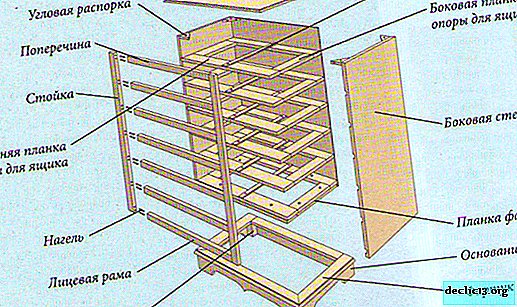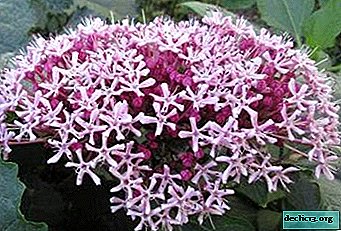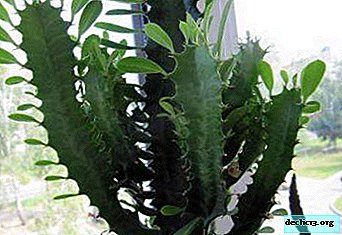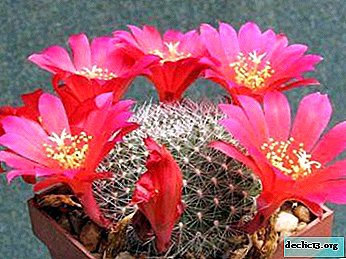The nuances of the proper fertilizer of spathiphyllum - how and how to feed the plant?
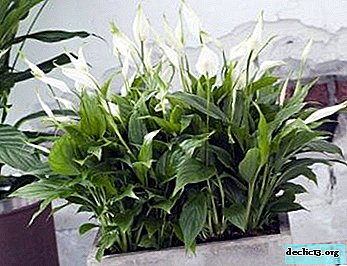
Every houseplant requires care and attention. Spathiphyllum is no exception. For an exotic flower, it is important not only lighting, temperature, humidity, but also a sufficient amount of nutrients.
And the timeliness of fertilizing, of course, is reflected in its appearance. Therefore, it is extremely important to know how to feed the plant, what dosage to use, and how often.
This article describes the nuances of the proper fertilizer spathiphyllum.
What is top dressing?
Top dressing is an agrotechnical technique aimed at improving plant nutrition, and as a result of the activation of the growth process, the duration of flowering. Top dressing is produced in two main ways: radical nutrition, when fertilizers are applied under the root, and non-root - spraying the vegetative part of the flower.
Importance for health and flowering
Attention! Proper maintenance and top-dressing is a guarantee of good plant health.The development period begins from the moment when the spathiphyllum was planted in a nutrient soil mixture. At first, he will not need additional minerals, everything is normal.
But over time, the soil is depleted, the nutrient components in the soil becomes less and less. Every day, the lush bush loses its decorativeness, foliage pales, immunity weakens, impossible, and flowering also becomes. But the young individual is significantly behind in development, as they say, sits in one place.
How to determine the need for additional food?
 Lack of nutrients directly affects the esthetic performance of spathiphyllum. The first signs of fertilizer deficiency are:
Lack of nutrients directly affects the esthetic performance of spathiphyllum. The first signs of fertilizer deficiency are:
- stunted growth, wilting green mass - a lack of magnesium;
- the foliage grows smaller in size, the color turns pale;
- prolonged lack of flowering against a background of a healthy state - lack of phosphorus;
- uneven yellowing of the leaf plate indicates a deficiency of boron and calcium;
- at the end of flowering, the foliage turns yellow and wilts - perhaps the spathiphyllum expended all the fed forces on this process.
When can’t fertilizer be applied?
Experienced flower growers do not recommend the use of fertilizers in the following cases:
- recently transplanted plant, as the new soil fully provides it with the necessary components;
- it is not necessary to fertilize a sick or pest affected flower;
- exot, just brought from the store, also does not need additional nutrition, an adaptation period of at least 2 months must pass;
- during flowering;
- in the cold season, you can not make mineral fertilizers, or minimize their amount;
- in the summer, during hot hours, you should not feed the exotic, it is better to transfer the procedure to the evening.
Optimal season
Important! The restoration of the process of introducing mineral substances occurs with the advent of spring. At this time, the plant enters the phase of active vegetation, after winter sleep.In the spring-autumn (March-September) period, feeding is worth every week. You need to suspend the procedure for the flowering time, and then normalize again. In autumn, the frequency of top dressing should be reduced to 1 time per month, and in the winter - excluded (how to care for spathiphyllum in winter?).
Periodicity
Accordingly, the number of fertilizers depends on the season of the year.
 Spring, summer, the first month of autumn - 1 time in 7 days.
Spring, summer, the first month of autumn - 1 time in 7 days.- In the second half of the autumn season 1 time in 15-20 days.
- In winter, if necessary, 1 time per month.
- The best option: during rest, spathiphyllum can easily do without additional nutrition.
How to fertilize Women's happiness?
Finished mineral fertilizers are applied mainly by the root method. Spraying is used in emergency cases when the plant dies.
Today, mineral fertilizers are produced in the form of:
- pills
- powder;
- sticks;
- granules;
- solution.
Beginning gardeners are recommended to use liquid fertilizers in order to avoid dosage errors. For spathiphyllum, it is preferable to buy fertilizers that are suitable for flowering plants, potassium and phosphorus substances predominate in their composition. You can also buy universal tools or special ones for Aroid or Azalea. Such brands have proven themselves well:
- "Garden of Miracles."
- "Bona Forte".
- "Master" for flowering plants.
- "Green house".
Use the nutritional components as follows.
- These mineral preparations are diluted with water in accordance with the proportion indicated on the package. Approximately 1-2 caps per liter of liquid.
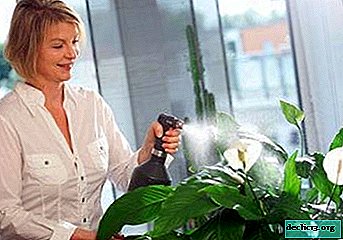 Use exclusively boiled or distilled water.
Use exclusively boiled or distilled water.- Moisten the soil before use.
- Pour the resulting solution strictly under the root, exclude falling on the leaves.
- After fertilizing, moisten the soil again.
- Feeding according to the schedule, thereby making it easier to avoid oversaturation of nutrients.
Many experts advise using self-prepared nutritional mixtures as well. What exactly from home remedies to feed the plant? There are many recipes suitable for eating spathiphyllum, for example, infusions on:
- banana peel;
- citrus peels;
- onion peel;
- whey;
- brewer's yeast, etc.
How to care for the soil?
Soil also must not be left unattended. Do not bring the earth in a pot to dry completely, because spathiphyllum prefers a moist environment. Especially you need to be careful when using fertilizers. In no case do not apply mineral preparations to dry soilotherwise, burns to the root system are possible. The soil should be slightly moistened.
After the procedure, the earth should be loosened a little to improve the flow of the air mixture to the roots. Also, do not forget to regularly update the soil, for an adult plant 1 time in 2-3 years.
How to carry out the procedure so that the plant blooms?
For the appearance of the long-awaited buds, spathiphyllum needs to create a kind of stress. Basically, it gives a good result in lowering the temperature, reducing watering, but the light should be enough. Before the flowering period, root dressing of the flower with potassium-phosphorus mineral preparations will not be superfluous.
 A nutrient solution is prepared at the rate of 1 g of the drug per 1 liter of liquid. Organic fertilizers will also positively affect future flowering. For spathiphyllum use a weakly concentrated mixture of mullein with water, in a ratio of 1:30. The main thing here is not to overdo it, because an excess of nitrogen will provoke the development of green mass, not buds.
A nutrient solution is prepared at the rate of 1 g of the drug per 1 liter of liquid. Organic fertilizers will also positively affect future flowering. For spathiphyllum use a weakly concentrated mixture of mullein with water, in a ratio of 1:30. The main thing here is not to overdo it, because an excess of nitrogen will provoke the development of green mass, not buds.
And during flowering, you do not need to fertilize, but fertilize the soil immediately after the process. Because the plant will be depleted, and the smell of nutrients should be replenished. It is better to use liquid complex mineral fertilizers.
Possible mistakes
Nutrient fertilizers can be beneficial and harmful. It all depends on the amount of fertilizer applied, as well as the frequency of this procedure.
Nutrient deficiency
Provided that the exotics have not been transplanted for a long time, the soil has become poor or originally planted in depleted soil - you can not wait for flowering (how to transplant spathiphyllum?). A plant has a so-called starvation. If there are no complex mineral fertilizing, then the appearance of the plant speaks for itself:
- growth retardation;
- inflorescences are reduced;
- the stem lengthens;
- foliage size decreases;
- the color turns pale green;
- partial yellowing and death of green mass;
- weakening of resistance to fungal infections;
- long delay in the next flowering.
Oversupply
Often a situation occurs when the plant looks healthy. Juicy bright green leaves, large size. The flower is actively releasing new shoots. However, a long period of no flowering.
Such symptoms indicate an overabundance of mineral fertilizers. As they say, the exot is “fattening." Mineral preparations based on nitrogen stimulate active growth of green mass to the detriment of flowering.
Further care at home
Attention! So, for the appearance of buds, young shoots and the overall full-fledged development of room exot, room temperature in the range + 23-25 ° C is important. Necessarily without sudden changes and drafts.Also, when caring for spathiphyllum at home, you can not do without intensive lighting. If possible, it is worth putting a flower pot on the windowsill on the east or west side. Spathiphyllum loves sunlight, but in hot periods you need to be careful with it.
In addition to lighting, watering is still important. It is advisable to moisturize daily, but monitor the condition of the soil in the pot. The soil should not completely dry out; exot prefers a moist growth environment.
No need to get too carried away with top dressing, especially if the plant is healthy and in great shape. It is recommended to regularly loosen the soil in a pot, conduct visual inspections, spray the leaves, remove dried leaves and inflorescences.
Soil fertilizer is an integral part of proper plant care. Complex compositions with a small amount of nitrogen are in demand for the future flowering of spathiphyllum. Which, in turn, without fail, will delight everyone with beautiful and magnificent flowering.

 Spring, summer, the first month of autumn - 1 time in 7 days.
Spring, summer, the first month of autumn - 1 time in 7 days. Use exclusively boiled or distilled water.
Use exclusively boiled or distilled water.




